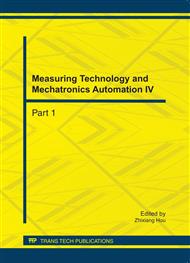p.602
p.607
p.611
p.616
p.620
p.625
p.629
p.633
p.637
Measurements and Predictions of Steady-State and Transient Temperature Distributions of a Gasoline Engine
Abstract:
During the design process of Internal Combustion (IC) engine, what is often taken into consideration is the temperature of the important heated parts. The temperature distributions are the primary causes of thermal fatigue in the engine. A combined experimental and analytical approach was followed in this work to study temperature distributions of gasoline engine under steady-state and transient operation condition. Experimental studies were conducted to measure temperatures under a series of steady-state and transient operating conditions. A comparison of the steady-state and transient measurements has been made and the character of transient temperature distributions is concluded. Subsequently, a calculation analysis was conducted to predict the detailed temperature distributions. Solid-Fluid whole conjugated heat transfer method is applied in the numerical calculation, which can take the mutual influence both the fluid flow and the heat transfer into account. The predicted temperatures met well with the measurements. Furthermore, the predicted location of coolant boiling phenomena in the water jacket can be made certain. This can give some suggests for the further observation experiment of boiling heat transfer.
Info:
Periodical:
Pages:
620-624
Citation:
Online since:
October 2011
Authors:
Keywords:
Price:
Сopyright:
© 2012 Trans Tech Publications Ltd. All Rights Reserved
Share:
Citation:


